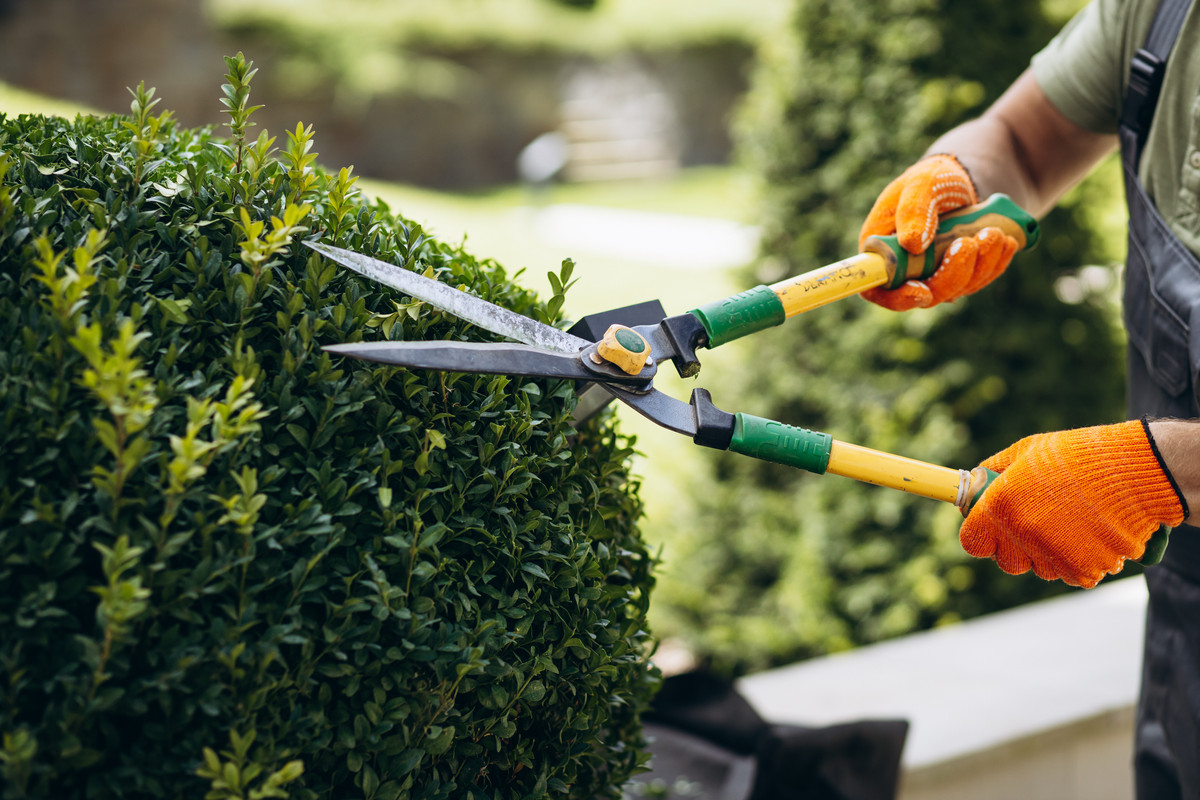Different Types of Landscaping
by siteadmin

Depending on the purpose, landscaping can change the visible aspects of a property. It is the art of altering the features of a property that are visible to visitors. In addition, landscaping can also include plants and water features. Listed below are some examples of different types of landscaping. All of these features will add to the aesthetic appeal of your property. If you're interested in learning more, read on. We'll cover the different types of landscaping, as well as their benefits.
Landscape design
Different perspectives reveal different compositions in a landscape. These compositions require different focal points, including texture, size, and color. Landscape design aims to achieve a seamless flow around the property. In order to achieve this effect, the elements of a landscape should complement each other. These principles can be applied to residential landscaping. Here are some tips for successful landscape design:
First, set clear goals for sustainability. An extensive sustainable landscape design typically addresses a series of objectives, including minimizing water use, limiting pesticides, and minimizing mowing requirements. While each project may include all or part of these criteria, a sustainable landscape design may focus on other goals as well. For example, in residential design, a sustainable landscape is a landscape design that uses little to no water and uses minimal pesticides.
Once you have a basic idea of the style of landscape you would like, you can start planning the details. The next step is to select the proper plants and groundcover. You should consider existing features and make sure that you're using the correct symbols for them. This helps you avoid confusion later on. Using scientific names for plants is important since they can prevent soil erosion. Moreover, trees need years to grow to full maturity, so the design must incorporate this time-consuming process.
Finally, choose plants that suit the style of your home. For example, if you live in a city, consider simple landscapes that use fewer plants, and choose them carefully. These designs also require less maintenance. However, they require a little more creativity and imagination. When choosing plants, keep in mind the size of their mature form. If your plants are too small, they can easily overshadow the other elements of the design. If you want a more naturalistic design, choose shrubs and trees. If your house is in the country, use old-fashioned plants such as junipers.
Hardscape design
Landscape design can be divided into two basic types: hardscapes and the rest of the project. Hardscapes are any structures that are man-made and are generally constructed of stone or other hard materials. The building products used to construct these structures can be natural, like stone, or manufactured, like concrete. A well-planned hardscape can enhance the beauty of a yard and support the needs of people with disabilities. Listed below are tips to ensure the success of your hardscape project.
As an added bonus, hardscape elements can help direct traffic throughout the yard and make it cohesive. For instance, gravel paths can direct guests through your herb garden or away from your prized flowerbeds. For a more dramatic effect, you can use stone landscape steps or a tiled patio. A wooden arbor can also be an attractive hardscape element. Pergolas are arbor-like structures attached to your home. For low-cost designs, try flagstone patios.
Pergolas, arbors, and trellises are examples of hardscape elements that create beautiful backyard destinations. These structures are crafted from a variety of materials and can be designed to support climbing vines or other plant life. Some of these structures are connected, while others are entirely independent. To help create the perfect landscape for your backyard, contact a landscape designer for more information. It's easy to transform a garden area into an attractive and functional outdoor space.
Water features
Water features in landscaping are an excellent way to enhance the aesthetic appeal of your landscape. They can add visual interest and a tranquil ambiance to any area while also helping to keep unwanted noises and vibrations out. Many water features can be customized to fit your landscape, providing the perfect combination of aesthetics and functionality. In addition to enhancing the look of your property, they can also serve as a directional point and a gathering spot.
Regardless of the type of water feature, you can add fish for a touch of beauty. Koi and goldfish are two popular options. Fountains, meanwhile, can come in any shape you like. They can add motion, sound, and visual interest to any landscape, adding a designer's touch. Waterfalls, especially those made of natural stone, catch the eye from a distance. Waterfalls are also great for hiding unwanted noises.
Besides being an eco-friendly feature, water features in landscaping can attract and protect key wildlife. The National Wildlife Foundation recommends that all backyards feature water features for wildlife habitat. When implementing a water feature in a landscape, consider these questions before you install a water feature. Whether or not the feature blends well with the aesthetic of your house or neighborhood, you need to think about how to maintain it. Water features can be an excellent investment and can increase the value of your property.
Plants
Whether you want to add year-round interest or create a natural border with native plants, there are a wide variety of plants you can choose from. Hardy perennials are drought-tolerant and provide attractive colors and fragrant fragrances. Annual flowers can completely change the look of a front yard. Perennial landscaping plants include hydrangeas, black-eyed Susans, and irises. You can also try planting annuals such as dahlias, daffodils, and hyacinths to give your yard a natural look.
Before buying plants, learn about their requirements. Remember that plants grow much larger in the ground than they do in pots. So, be sure to measure the space where you plan to place them in order to avoid crowding them. Know what type of soil you have, too. Many plants thrive in neutral soil, while others require acidic or alkaline conditions. Make sure to know the climate of your area before buying plants. If the temperature is extreme, you'll need to consider other plants in your area.
Native plants are a good choice for landscaping projects because they enhance the soil, keep weeds at bay, and are beautiful and low-maintenance. They also help preserve the vital native gene pool. Native plants are great choices for both large and small yards. The best part? They're easy to grow, too! And best of all, they look great in any yard or garden. If you're looking for a new landscape, start by planning your next landscaping project.
Maintenance
Maintenance of landscaping is an integral part of groundskeeping. Groundskeepers are responsible for managing animals that live on and near the property. These animals may include insects, birds, rodents, and critters. Proper ground management allows these animals to be free from harm while still providing an attractive landscape. Suppose there are issues with critters or other animals, the grounds keepers can address them as quickly as possible. Some problems may arise from domestic animals, such as squirrels.
The maintenance services segment delivers a comprehensive suite of recurring commercial landscaping services for both seasonal and evergreen markets. Services include mowing, garden maintenance, tree care, snow removal, and water management. It maintains landscapes for corporate campuses, leading international hotels, and airport authorities. The company's diverse customer base includes restaurants, hotels, and golf courses. The company has been in business for over 47 years and has been serving the community for over 20 years.
All landscaping on a property must be trimmed at least once every year. This includes pruning only what is necessary to maintain the growth of the plant. Fertilizers should be applied according to the manufacturer's recommendations, and mulch must be replaced at appropriate intervals. Shade trees should have saucers surrounding them. Trees, shrubs, and other planting areas must be weed-free. Any evidence of disease or pest infestations must be treated or replaced.
Cost
If you're transforming your home's exterior, you'll want to know how much landscaping will cost. The cost of landscaping services is variable and depends on the size and type of project. The more expensive services can be broken down into parts. You can also reduce the costs by doing it yourself, but mistakes will increase the overall price. It is wise to hire a professional for landscaping services rather than attempting to do it on your own.
Landscape costs range from $4 to $12 per square foot, depending on the complexity of the project and the size of the yard. The largest component of the total landscaping cost is labor. Landscapers charge between $50 and $100 per hour, and this will depend on the number of crew members and the size of the project. On average, it takes a two-person crew 30 minutes to cut a lawn. This means that the average landscaping project will cost anywhere from $25,000 to $30,000 for a single-family home.
Categories: Landscaping
Tags: landscaping services, landscaping guide, landscape designs, landscaping approaches, landscaping techniques
Depending on the purpose, landscaping can change the visible aspects of a property. It is the art of altering the features of a property that are visible to visitors. In addition, landscaping can also include plants and water features. Listed below are some examples of different types of landscaping. All of these features will add…
Recent Posts
- Lawn Care Spring Branch Advocates for Property Care: Combatting Weed Growth and Preserving Curb Appeal
- Lawn Care Spring Branch Advocates for Property Care: Combatting Weed Growth and Preserving Curb Appeal
- Expert Cleaners Lexington: Setting New Standards in Quality Assurance and Flexibility
- Expert Cleaners Lexington: Setting New Standards in Quality Assurance and Flexibility
- Expert Cleaners Lexington: Elevating Vacation Rental Experiences Through Professional Cleaning Services
